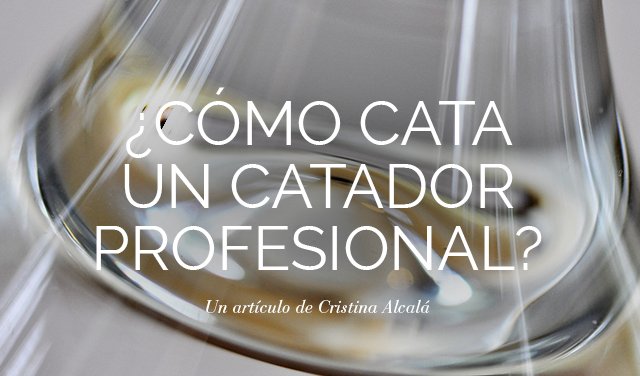How do professional tasters taste wine?

I'm often asked how wine competitions work, how wines are evaluated and awarded points, how the wines are tasted and how the tasting table is set up. Although every contest has its own rules and characteristics, certain aspects are common to all international competitions, such as the training of the tasters or the tasting sheet.
Putting together the tasting panel—in other words, selecting the tasters—is a key element. A taster's toolkit consists of his or her sense of smell and taste. A professional's attitude should be informed by rigor, conduct, utmost objectivity, silence, reflection, evaluation and an overall understanding of the wine being tasted at any given moment. In fact, the organizations responsible for a competition often invest immense effort into selecting their professional jury as a way of setting themselves apart. Occasionally tasters are even asked to take a short exam to see if their scoring and personal attitudes coincide with those of the organizers. Wine tastings can be a lot of fun, but doing so as part of a competition in which you are evaluating the quality of a wine and assigning scores that will ultimately affect consumer choices is more serious than one might think.
The tasting sheet
There are a variety of tasting sheets and scoring ranges. One of the most commonly used models was created by the OIV (International Organisation of Vine and Wine), an intergovernmental organization whose standards many international competitions go by.
All wines are tasted blind, meaning the bottles are covered and numbered before being brought to the table. The taster is given very little information about the wine. The most common details are usually vintage, variety or style (oaked vs. un-oaked, off-dry, etc.), but this can vary from competition to competition. Preparing the table for a tasting is very simple: a white tablecloth, clean glasses, water, spittoons, and some bland bread or crackers to eat between wines.
The tasting sheet indicates several descriptors to consider during sensory evaluation, which can be rated as excellent, very good, good, satisfactory or unsatisfactory for the various tasting criteria: sight, nose and palate. Each assessment is assigned a different numerical value, adding up to a total score of 100 points should each one receive the highest number of points possible. Lets break it down.
Sight
When evaluating the appearance of a wine, two aspects are key:
1- Clarity: This measures the wine's level of haziness on a scale from excellent to unsatisfactory. The scale goes from crystalline to opaque, stopping at limpid, clear (difficult to determine the level of haze) and slightly opaque (moderately hazy).
2- Appearance: Defined as the visual properties of a wine other than clarity, including color, nuances and brightness. Impressions range from excellent, very good, good and satisfactory to unsatisfactory.
Smell and taste
These are the olfactory and gustatory impressions, which are evaluated according to the following parameters:
1- Cleanness: Evaluates how clean a wine is (the presence or absence of flaws). Flaws can result from enological, viticultural or non-wine-related problems. Flaws may stem from the raw materials, the grapes, bacterial infections, etc. Excellent means the total absence of flaws, very good indicates the presence of a few minor flaws and so on and so forth, down to an unsatisfactory score should the wine present many or major flaws.
2- Intensity: This refers to the magnitude of the combined qualitative aromas perceived by the nose. Intensity can be classified as very strong, strong, medium, low or poor.
3- Quality: The overall evaluation of a wine. This scale allows the taster to give his or her impression of the overall quality, drawing on personal preference and cultural references as based on his or her professional experience. In addition, the complexity and elegance of a wine is taken into account. Quality is one of the most important parameters.
4- Finish: This measures how long the flavors persist after swallowing (or spitting out) the wine, calculated in seconds from the moment the wine leaves the mouth. This is also known as “caudalie,” a word that has largely disappeared from tasting terminology. OIV regulations even quantify finish in terms of fractions of a second. Excellent, for example, means the finish lasts more than six seconds, whereas quite good would be equivalent to two seconds.
Balance
Finally, one must consider balance and the overall impression, two important aspects. This parameter allows the taster to round the score up or down based on the overall impression of the wine (sight, nose and palate). This evaluation also considers the aging potential of a wine and how it might mature over time. As with the other criteria, impressions are ranked on a scale from excellent to unsatisfactory.
At first, this might all seem incredibly complex, but it really just comes down to practice. On several occasions, I have organized informal wine tastings with friends using professional tasting sheets, and they had a really great time. So I encourage all of you who are interested in the world of wine tastings to practice—I'm sure you will find the assessments surprising and enjoy yourselves in the process.
Cristina Alcalá
